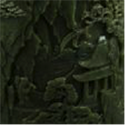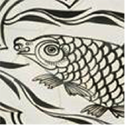|
|
| Show All 9 Results (Text Only) |
|
| Taoism and the Arts of China |
|
| The Art Institute of Chicago
|
An excellent website for teaching about Taoism. Covers the following three themes: 1) Taoist Tradition (discusses Laozi, Taoist cosmology, and the sacred immortals); 2) Taoist Church (discusses religious Taoism, ritual, and the Taoist pantheon); 3) Taoist Renaissance (discusses popular religion, divine manifestations of yin, and inner alchemy). Also features more than 25 works of art, related diagrams, a map, timeline, glossary, bibliography, and six lesson plans for the middle- and secondary-school levels.
Go to Museum Resource: https://archive.artic.edu/taoism/menu.php | |
|
|
| Taoist Art |
|
| Minneapolis Institute of Arts
|
"The Taoist philosophy is indigenous to China. Formed in the late Bronze Age, it has a history of over two thousand years and it exercised a deep and lasting influence on Chinese painting, calligraphy, poetry, medicine, political theory and personal conduct." Brief introductory text and 14 artworks from the MIA collection, most with descriptions. Also, a featured collection of paintings depicting the Three Purities -- "the supreme deities of orthodox religious Taoism."
Go to Museum Resource: http://archive.artsmia.org/art-of-asia/explore/explore-collection-taoist-art.cfm | |
|
|
| Attitudes Towards Nature in Daoist Art |
|
| Asia Society
|
Lesson plan that helps students understand the difference between how many Westerners view nature versus how many Chinese (particularly Daoists and the literati) felt about the natural world around them. Uses Chinese poems and landscape paintings as primary sources.
Go to Museum Resource: http://asiasociety.org/education-learning/resources-schools/elementary-lesson-p... | |
|
|
| Confucianism, Daoism, Buddhism: How do different belief systems fit together in one country? [PDF] |
|
| The Field Museum
|
In this lesson plan students will explore three major belief systems in China–Buddhism, Confucianism, and Daoism - through art and artifacts. Through discussion and object-study, students will wrestle with how these different belief systems co-existed in China, and how they influenced and Informed each other. Spanish PDF also available.
Go to Museum Resource: https://www.fieldmuseum.org/sites/default/files/lifeways.pdf | |
|
|
| Daoist Immortals |
|
| The Cleveland Museum of Art
|
This lesson plan uses art to introduce Daoism. This complex faith system, which can be regarded as polytheistic religion, has numerous religious figures, called Immortals. While this lesson focuses on the immortals, it also explores the complexity of the Daoist faith.
Go to Museum Resource: http://www.clevelandart.org/lesson-plan-packet/daoist-immortals | |
|
|
|
| Lesson Plan: Concepts of Nature [PDF] |
|
| The Art Institute of Chicago
|
Lesson plan related to module on Taoism: Taoist cosmology was shaped by the way in which the Chinese traditionally understood the world. Taoists believe that when the world began, there was only the Tao, a featureless, empty void able to be filled with the potential of all things. At this point, the Tao generated swirling patterns of cloudlike energy, called qi (pronounced "chee"). This energy developed two complementary aspects: yin, which is dark, heavy, and feminine, and yang, which is light, airy, and masculine. Yin energy sank to form the earth, yang energy rose to form the heavens, and both energies harmonized to form human beings. Consequently, the human body holds within it the energies of both the earth and the heavens. Grades 10–12 English Language Arts, Social Science.
Go to Museum Resource: https://www.artic.edu/assets/773fe693-17c7-62b2-9e50-20718bec233c | |
|
|
| Lesson Plan: Signs of the Zodiac [PDF] |
|
| The Art Institute of Chicago
|
Chinese art often incorporates animals that symbolize traits or characteristics. One of the most prominent ways that animals have been used symbolically in Chinese culture is in the Chinese zodiac. Grades 4–8 English Language Arts, Fine Arts, Social Science.
Go to Museum Resource: https://www.artic.edu/assets/d594a444-64ce-5c68-823a-cb441314f3cd | |
|
|
|
| Show All 9 Results (Text Only) |








